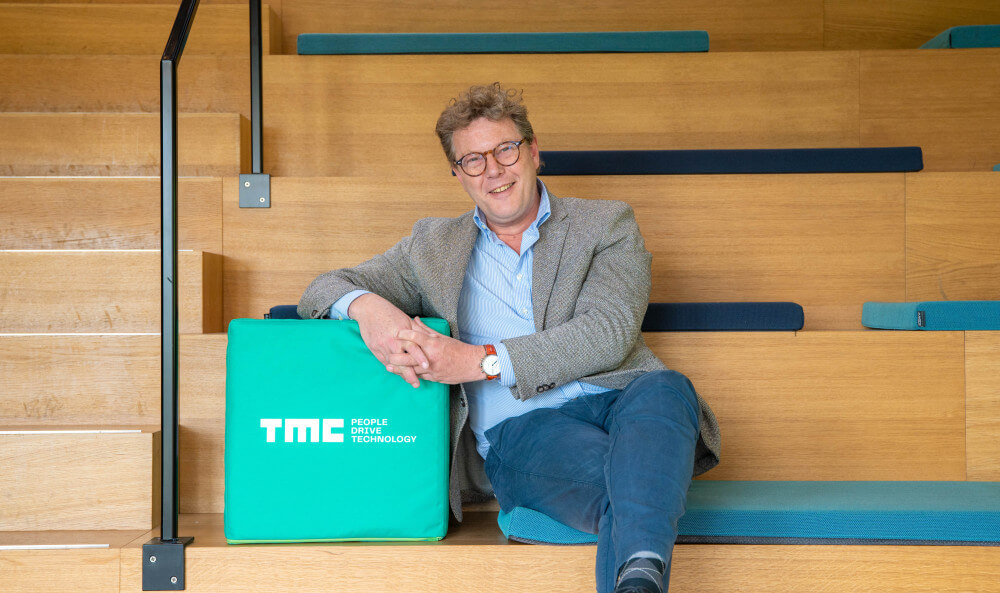![pressrelease_level21[1].png pressrelease_level21[1].png](https://www.themembercompany.com/cache/4462ce0d05b0dcb96e3bd48ef7106e67/pressrelease_level21[1].png)

3 applications of 3D printing
The applications of 3D printing are expanding increasingly: we can print houses, hip implants and even hamburgers. 3D printing, also known as additive manufacturing, is a technique in which a product is printed layer by layer. This technology is growing rapidly and is predicted to continue growing with 21% annually. In this article Erik Huisman, Paul Mestrom and Bart van Liere, all employeneurs at TMC, explain how 3D printing is developing within different sectors. What is possible within 3D printing already and what are the challenges?
Leestijd: min.More and more companies from various sectors are switching from conventional production methods to 3D printing. This saves them time and money. Bart explains: "The advantage of 3D printing is that you can quickly hold a design in your hands and see what it is like. I have often had a design that turned out wrong after printing it. Fortunately, you can react to that quickly. The disadvantage is that you get used to how fast the printer is. The danger is that you sometimes print parts too quickly before completely thinking through your concept.”
Healthcare
The healthcare sector is one of the leading sectors in the field of 3D printing. For now, it is mainly about prosthetics such as a personalized artificial arm or static implants such as a hip implant. The socket of the hip bone can be given such a complex structure that the bone attaches much better. Paul explains: "The advantage of 3D printing is that the patient has to visit the hospital less often. After taking a scan, the prosthesis immediately has the right fit." In addition to prosthetics, surgical instruments are also being printed. Think of 3D printed molds that already have holes in them and that can be used to drill the right places in the jaw.
Printing living tissues, also known as bioprinting, is a great next step for the medical industry. If this becomes possible, organs can be printed which makes patients less dependent on donors. However, this process is a lot more complex because it involves working with living cells. The challenge lies in keeping the cells alive because 3D printing is quite a slow process. Erik explains: "I don't exclude the possibility of printing organs in the future, but for now the focus remains on replacing solid parts such as teeth and bones. The tricky part of printing organs is getting structure into them and making all the components work together. Printing a heart valve will be easier than lungs, because this part doesn't need to be perfused."
Architecture
Another sector in which 3D printing is being used more often is the construction sector. In this sector houses and even bridges are being printed. The biggest advantage of 3D printing within the construction industry is the speed and efficiency that it provides, since you are less dependent on manpower. In addition, material costs are lower because you only need to print the specific piece of material that you need. As printing is done layer by layer, designers can create more complex and futuristic shapes.
The logistics part is still a challenge because it can take a lot of time to transport the printer to another location and assemble it there. Erik says: "There is definitely a future for 3D printing in construction, but it will not replace all other construction methods. There will continue to be challenges for 3D-printing such as printing tall buildings.”
Food industry
It may sound futuristic, but there are several possibilities for printing food. For example, chocolate works of art are already being printed and Michelin starred chefs are using 3D printed food artworks in their restaurants. "3D printing food takes a relatively long time, which is why it is mainly used for luxury products. For this reason, 3D printing cannot be used for mass production yet," says Erik.
Another opportunity that 3D printing offers is optimizing our daily food intake, also known as personalized nutrition. By collecting personal data, it can predict what nutrients a person needs to live as healthy as possible. In addition, the consumer can indicate in what taste, texture and shape he or she wants it. In the elderly care, this can be used to print nutritious puree to ensure that elderly people easily ingest all nutrients. According to Erik, 3D printing in the food industry will remain at a niche level for the time being, because 3D printing and mass production do not go well together at this point.
The future of 3D printing
At the moment, 3D printing is mainly used on a small scale. If we want to use this technology more extensively, we will first have to develop the right methods so that costs can remain low. The 3D printing market is expected to continue growing and will therefore remain an interesting market full of innovations.

Stuur ons een bericht voor mogelijkheden, samenwerkingen of vragen. We komen graag met je in contact!


